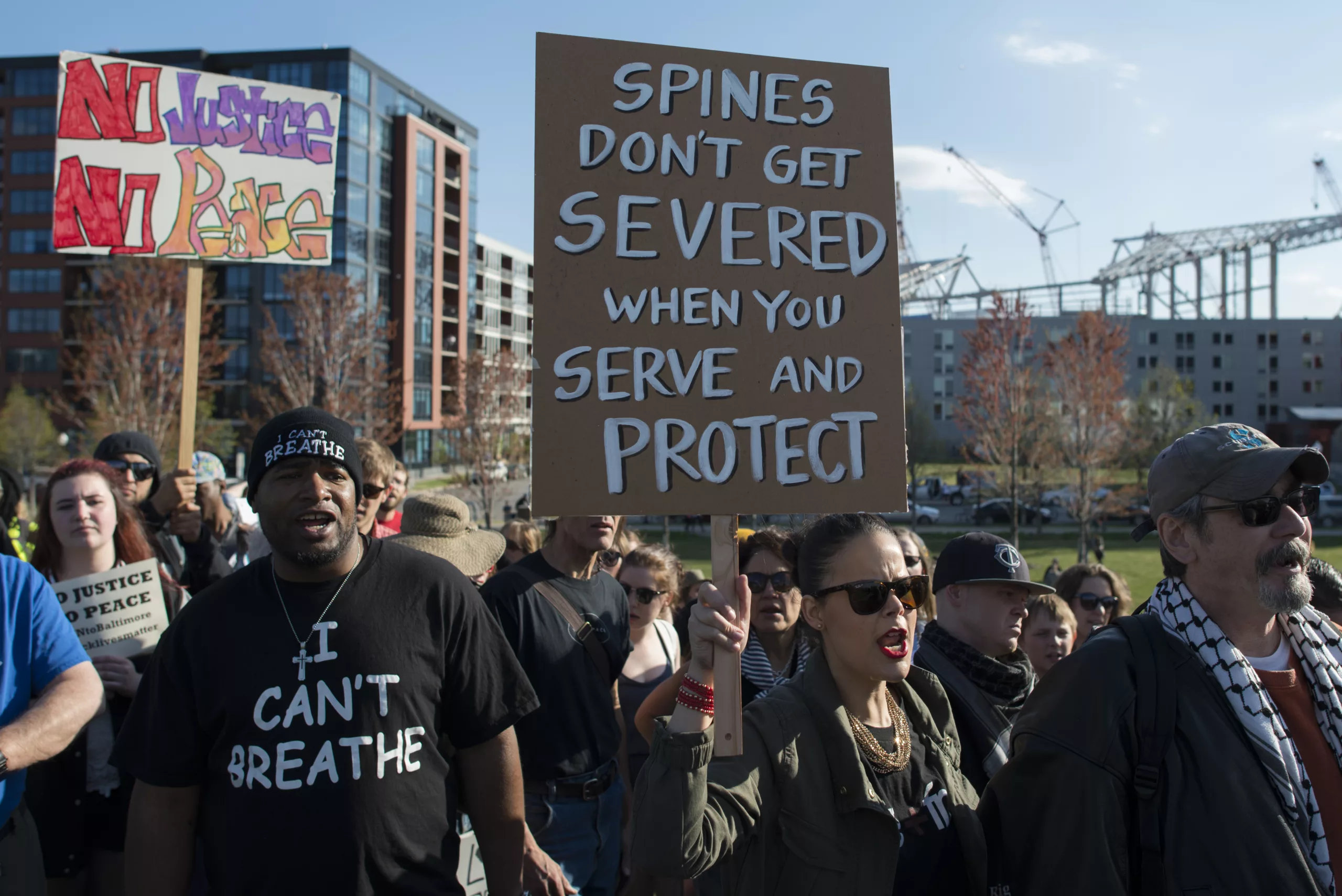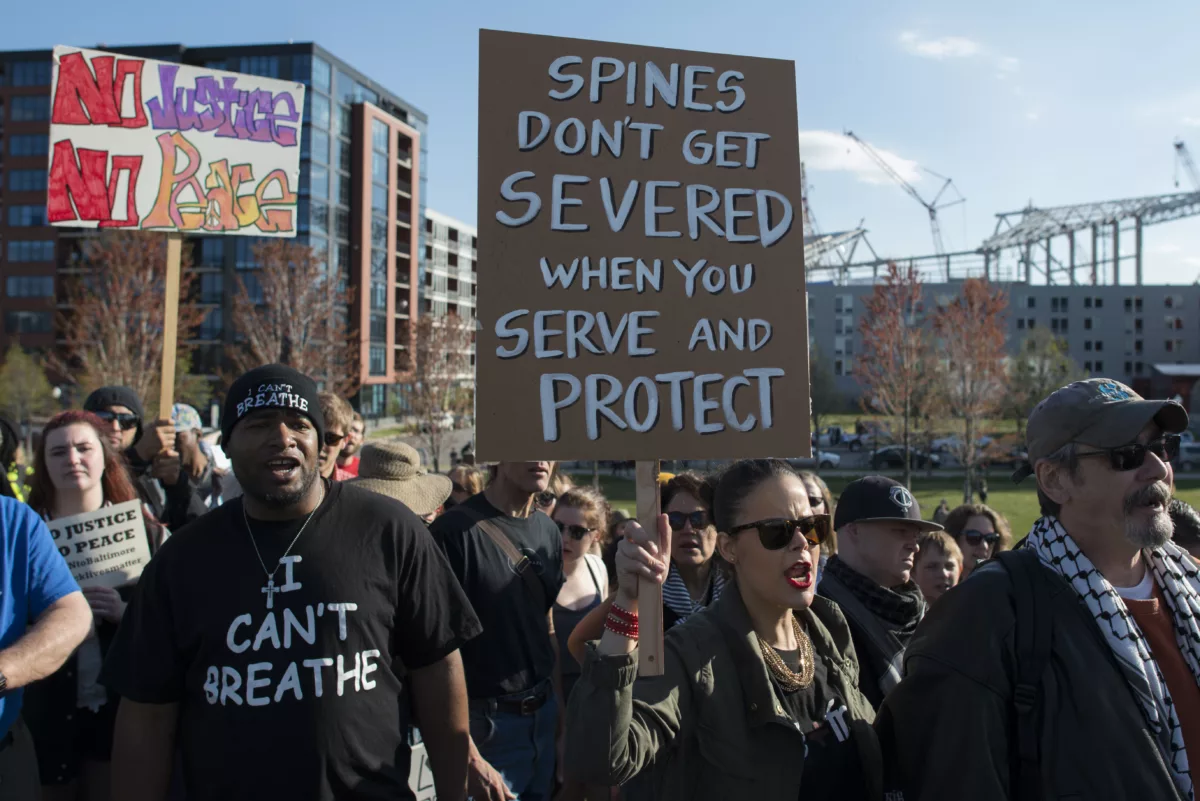Newsletter
‘They Killed Freddie Gray’: New Book Reveals Dark, Hidden Truth About Gray’s Death
In her new book, “They Killed Freddie Gray”, Justine Barron reveals much of what the public has believed about Gray’s death is incorrect.


‘They Killed Freddie Gray’: New Book Reveals Dark, Hidden Truth About Gray’s Death
by Elizabeth Weill-Greenberg
In the new book, “They Killed Freddie Gray”, author Justine Barron reveals that much of what the public has believed about Gray’s 2015 death at the hands of the Baltimore Police Department is incorrect. Most notably, prosecutors claimed that Gray died as a result of a so-called rough ride in a transport van—but Barron’s new reporting shows that this narrative was untrue. Instead, Barron says, Gray was killed as a result of excessive force.
On the morning of April 12, the then-25-year-old Gray walked to grab breakfast with two friends, only to find that the restaurant was closed. The group then walked through the surrounding neighborhood—until a Baltimore police officer biked toward them and asked them to stop. Gray, who’d been targeted by cops before, ran but was ultimately arrested.
By the time Gray arrived at a police station about an hour later, he was unconscious and not breathing. He died on April 19 from complications due to a cervical spine injury.
His death set off protests in Baltimore and throughout the country. On May 1, Baltimore State’s Attorney Marilyn Mosby filed charges against half a dozen officers, and “street protests turned into celebrations,” Barron wrote for The Appeal in 2020 on the five-year anniversary of his death. But the prosecutions did not bring the accountability or transparency community members hoped they would. Ultimately, none of the six officers charged in connection with his death were convicted.
Mosby’s office argued that Gray was killed on a so-called rough ride in a transport van. But through multiple eyewitness accounts and video footage, Barron shows that multiple officers injured Gray—he screamed out and begged for medical attention—before he was even thrown headfirst into the van.
“The prosecution based pretty much its entire story of what happened to Freddie Gray on the statements of the police, the statements of the defendants,” Barron told The Appeal. “The prosecution suffered the usual pro-cop bias even though they were charging cops.”
Below is Barron’s conversation with The Appeal about Gray’s death, the prosecution’s theory, and where the media went wrong. (Spoiler: Everywhere, Barron says.) The interview has been edited for clarity and length.
The Appeal: What were the biggest misconceptions about Freddie Gray’s case?
Justine Barron: Well, obviously this rough ride idea was sold to the public successfully, even though the judge said the prosecution hadn’t proven what happened to Freddie Gray. I think because the police department and the prosecutors all said he was killed somehow while the van was in motion, the public by and large went along with it.
I think there were a lot of terrible assumptions about who Freddie Gray because of his arrests. People that aren’t in Baltimore or don’t understand how criminal justice works in Baltimore see all these arrests and they just assume the worst about a person. But there were so many misconceptions about that so-called rap sheet. First of all, they were just arrests, and a lot of them were frivolous, nonsense arrests. The prosecutor didn’t even move forward with half of the charges because there was no probable cause involved.
There was no violence in his record. He never had a gun on him or even a knife, for that matter. There were several arrests in a row when he just turned 18. There were also duplicated records. People were saying, “Oh, 20 arrests,” but several of those were duplicated.
I think those were the big assumptions—a misunderstanding of who this person was and how he was killed.
TA: Why do you think that the prosecution decided to sell this “rough ride” idea to the public?
JB: I believe that it was a rushed decision, and that’s apparent because they were making the decision before they had reviewed most of the evidence. They even said as much in statements—that they based their charges on the cops’ statements, which is wild because the cops are the defendants.
And there had been this consensus among a lot of [local political] leaders that this would be the path of least resistance. The true situation of what happened, the number of cops involved in harming him, and the number of cops involved in covering it up was so massive that it wouldn’t have quieted the protests in the same way as saying that it was something that happened while the van was moving.
I think that it’s confusing to some people because six officers were charged. But if you look at the actual case that was put forward, none of those officers were charged with committing direct violence.
TA: Your book is called “They Killed Freddie Gray.” Who would you say killed him?
JB: The evidence strongly suggests three officers picked him up and threw him headfirst into the van at the second stop. I don’t think they meant to kill him. Freddie Gray’s fatal injury is considered to be the broken neck, specifically a jumped facet injury. The throw is the most likely cause of that since a jumped facet is caused by headfirst force against a hard surface. Then driving him around unrestrained for the next half hour or so certainly didn’t help. And so for that, there were other officers involved.
TA: Where did the media coverage of this case go wrong?
JB: Where did it go right? The biggest mistake was just “police say” journalism. The buying into a police narrative of what happened, and the dismissal or marginalization or erasure of eyewitness statements is what happened and what went wrong. The media bought into the police’s narrative on every level, about the knife arrest, about the van stops—even though it couldn’t all be confirmed— [and] that his injury happened in the van while it was moving.
Lots of witnesses were speaking to reporters. At most, they would get a soundbite. But every police statement would get a map or a timeline.
The other thing was in terms of who Freddie Gray was. He was a beloved personality in his community. And so to tell his story through court records was another major failing. He became, at worst, this hardened, horrible criminal, and at best, this sad sack who had lead poisoning and was inevitably going to die anyway. They were just using civil and criminal court records to tell the story of a person who was a lot more than that.
ICYMI — From The Appeal
As a handful of states push bills explicitly targeting incarcerated trans people, advocates say the proposals offer a glimpse into the future of anti-trans legislation—increasingly targeting trans adults as well as children.
Kids—some as young as 5—have been subjected to 335,000 forced psychiatric exams under Florida’s Baker Act over the past decade. Advocates say the seizures are traumatic, especially to those with disabilities who may not understand what is happening. This story was co-published with MindSite News.
In the news
Construction has started in New York City’s Chinatown on what’s expected to be the world’s tallest jail. [Wilfred Chan / The Guardian]
After a battle that’s lasted more than three years, NPR obtained access to previously secret government inspection reports of detention facilities which reveal horrifyingly inhumane conditions. [Tom Dreisbach / NPR]
The Biden administration is fighting a New Jersey state law that prohibits Immigration and Customs Enforcement (ICE) from contracting with private prison companies. [Catalina Adorno and Li Adorno / Truthout]
Incarcerated people are punished for mourning the loss of a loved one. “They handed me a paper gown and told me to stop crying,” writes E.J. for Scalawag. “I was told that when I stopped crying, I would be released from Mental Health to go back to my clothing, back to my dorm.” [E.J. / Scalawag]
That’s all for this week. As always, feel free to leave us some feedback, and if you want to invest in the future of The Appeal, donate here.
